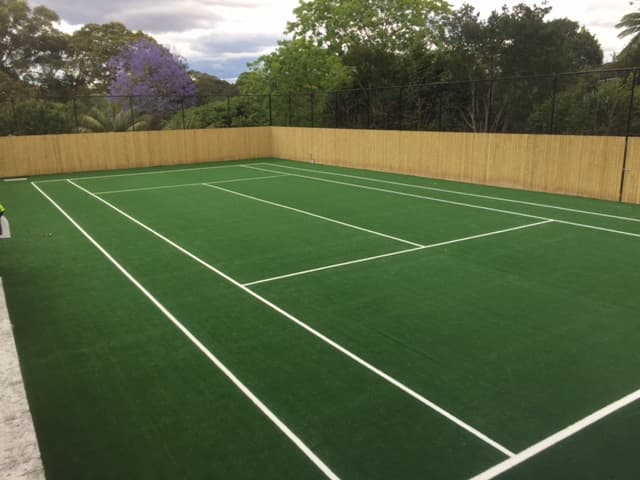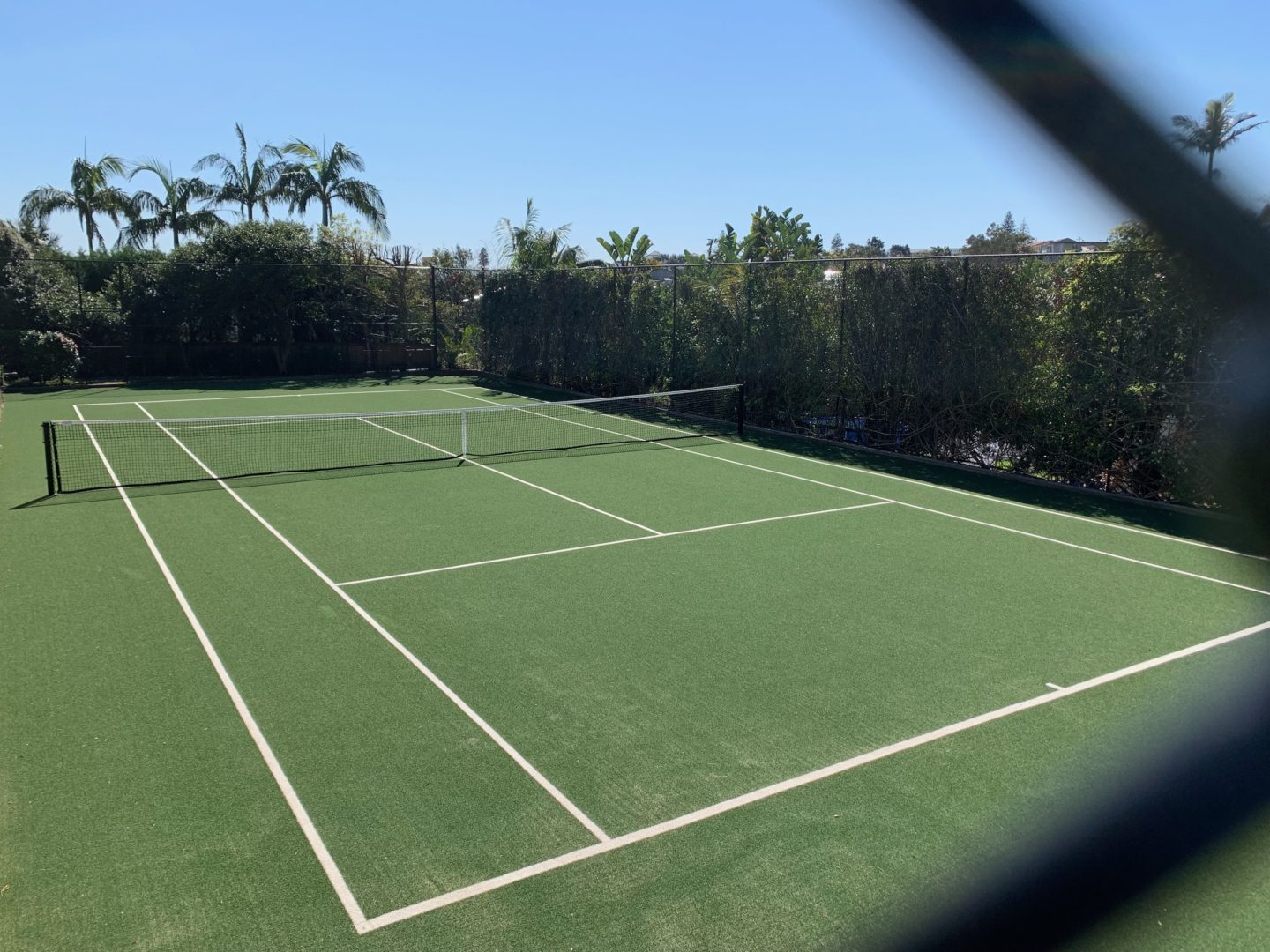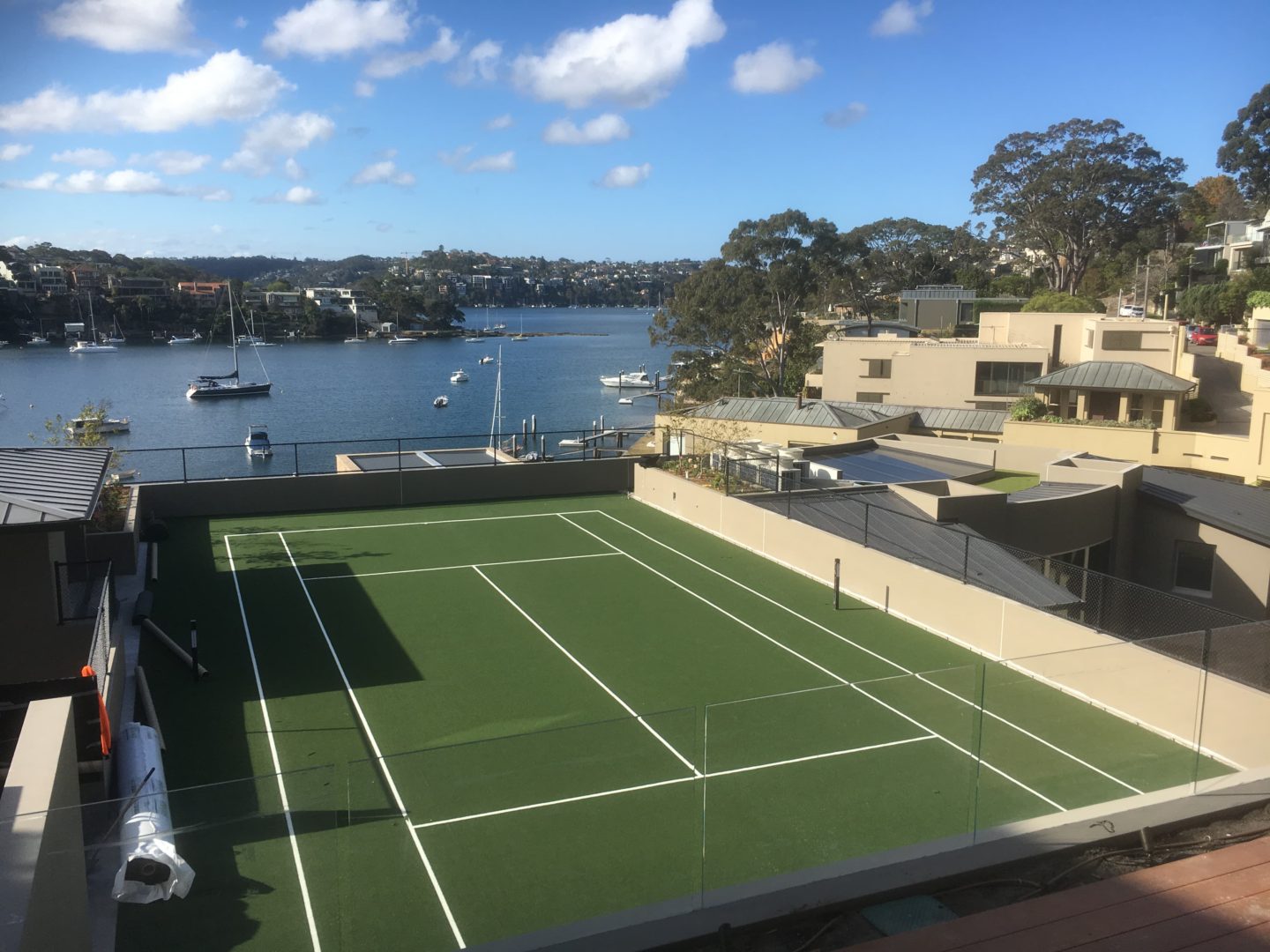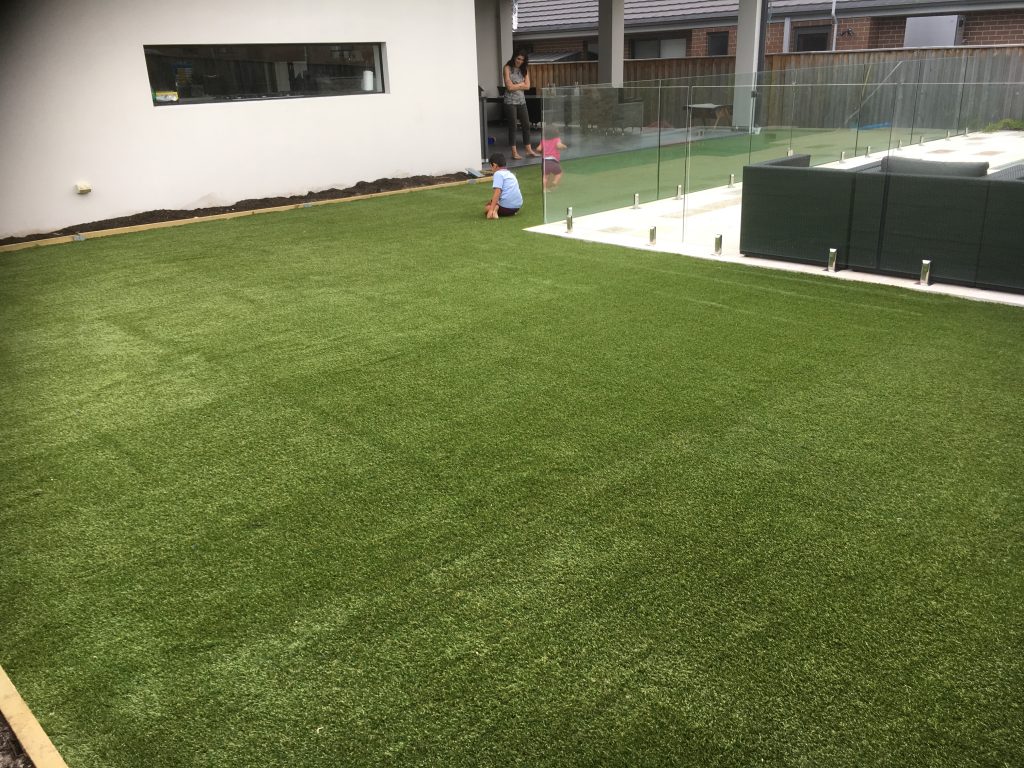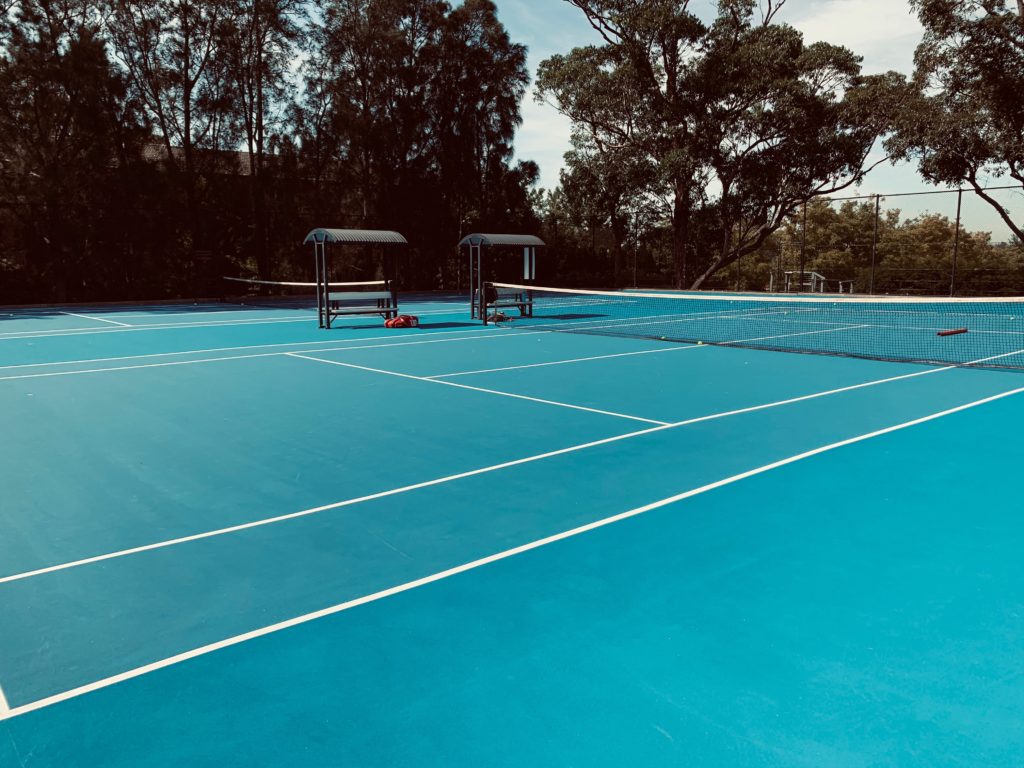So, you’ve decided you want to install a residential tennis court. This is great, but make sure the process is planned properly and installed by a reputable contractor. There are many things that need to be taken into account, so we are here to give you a guideline on the process and considerations to be taken.
First of all – Will it fit?
Tennis court playing dimensions are set at 23.77 metres long by 10.973, however it is recommended not to build a court smaller than 30 metres by 15 metres. It is also best to design your tennis court layout with your other outdoor areas taken into consideration, eg pools, outdoor entertaining, and views to mention just a few.
Next – Work out a budget.
Things that will effect your budget include where your court is being built, what it is being built on, what surface you want for your court, appropriate lighting for those night tennis matches, and of course labour to build your court.
Now – The Nitty Gritty
What permissions do you need? You will need to submit DA approval from your local council – the SSG team can help you with any questions surrounding this. The construction of your tennis court will have to meet minimum standards of the Sports Contractors Association of Australia. Your local State Office can supply you with the construction guidelines as set out by the Sports Contractors Association of Australia, detailing minimum standards of construction.
The construction of your tennis court sub base is a civil engineering project so you may wish to engage a qualified civil engineer to advise on things like soil compaction, drainage and stability. The Cement and Concrete Association also specifies minimum specifications in regards to concrete to provide maximum strength. Similarly, suitable foundations should be in place for fence posts and light poles if they are being used.
Then – What Surface?
The surface you choose for your residential tennis court will have an impact on the quality of the tennis you can play. Most popular now are Synthetic playing surfaces, which have seen a rise in popularity over courts of natural grass and loose granular products. There are a wide range of options available and each offers different playing conditions, so research the features and advantages of each surface available and find which will work best for you. Don’t forget to factor in ongoing maintenance of your court.
Last – Lighting Your Match
Desirable lighting outcomes for your residential tennis court should include obtaining the same amount of lighting across the whole court, while also limiting the light escaping into surrounding areas. Tennis court lighting has come a long way over the years, with Metal halide lights now providing high light levels on the court, uniformity of lighting on the court and restricting light spillage outside the court. These lights can now be sourced in 1500 watt fittings, further increasing the overall light levels on the playing surface.
Don’t Forget Your Surroundings
Before installing your residential tennis court make sure the surrounding areas of your court have also been planned. Are you looking to install other entertainment areas to compliment your new tennis court? A new pool perhaps? Now is the time to discuss these future plans to avoid problems cropping up when finishing your outdoor area.
Want to find out more? Contact us for all your information on installing your residential tennis court.
Have a look below at some of the residential Tennis Courts Synthetic Sports Group has installed.


